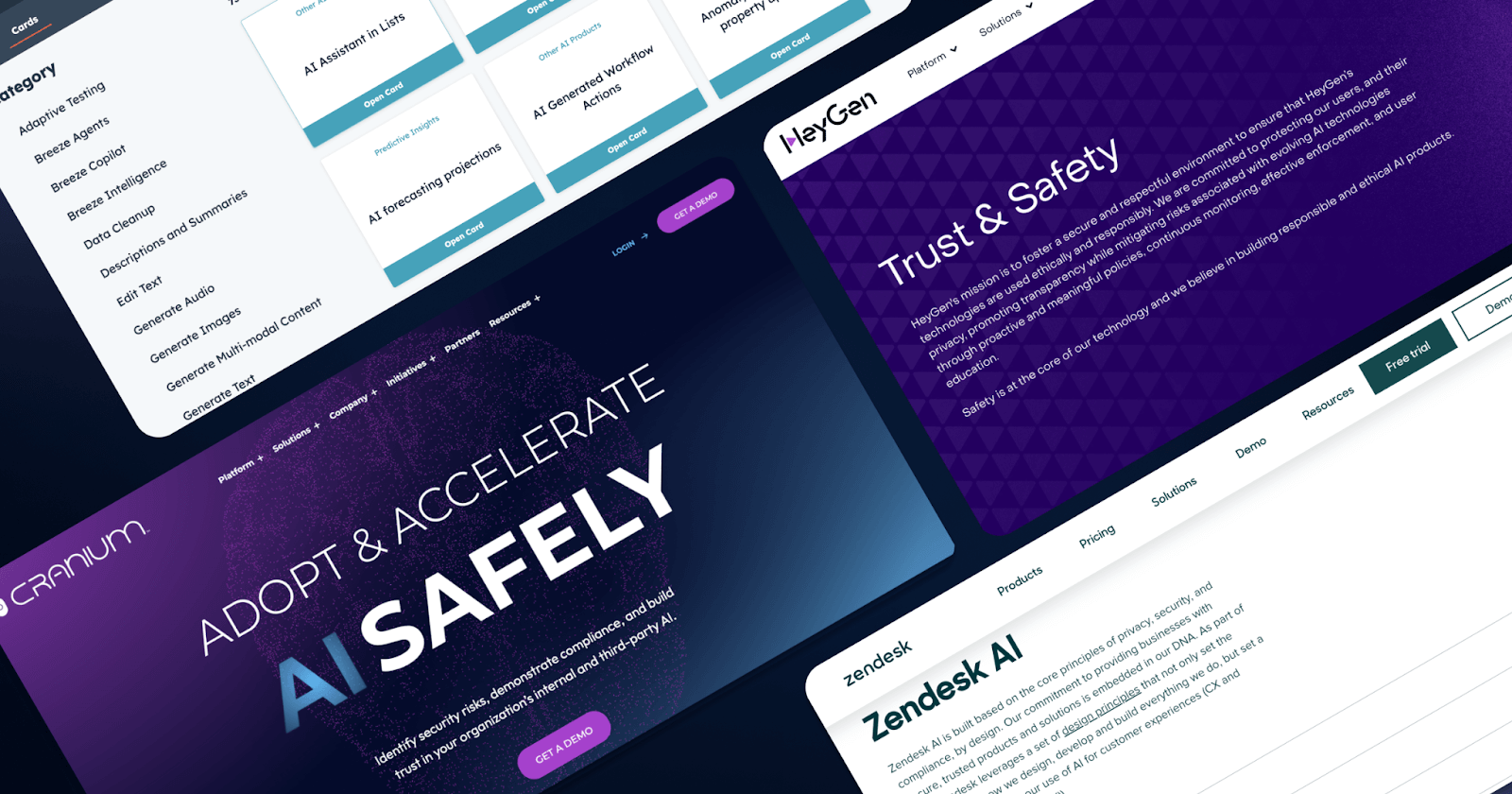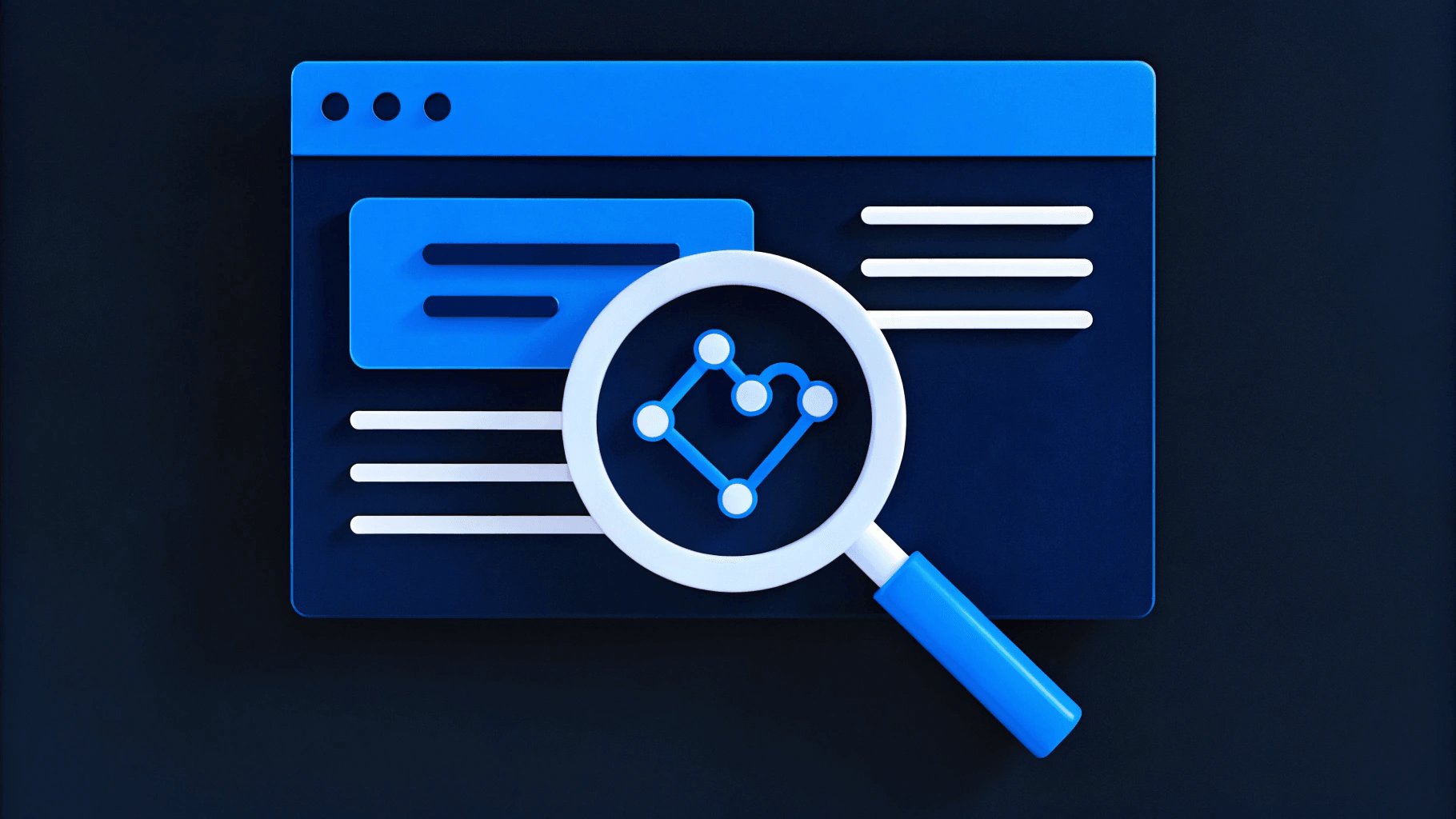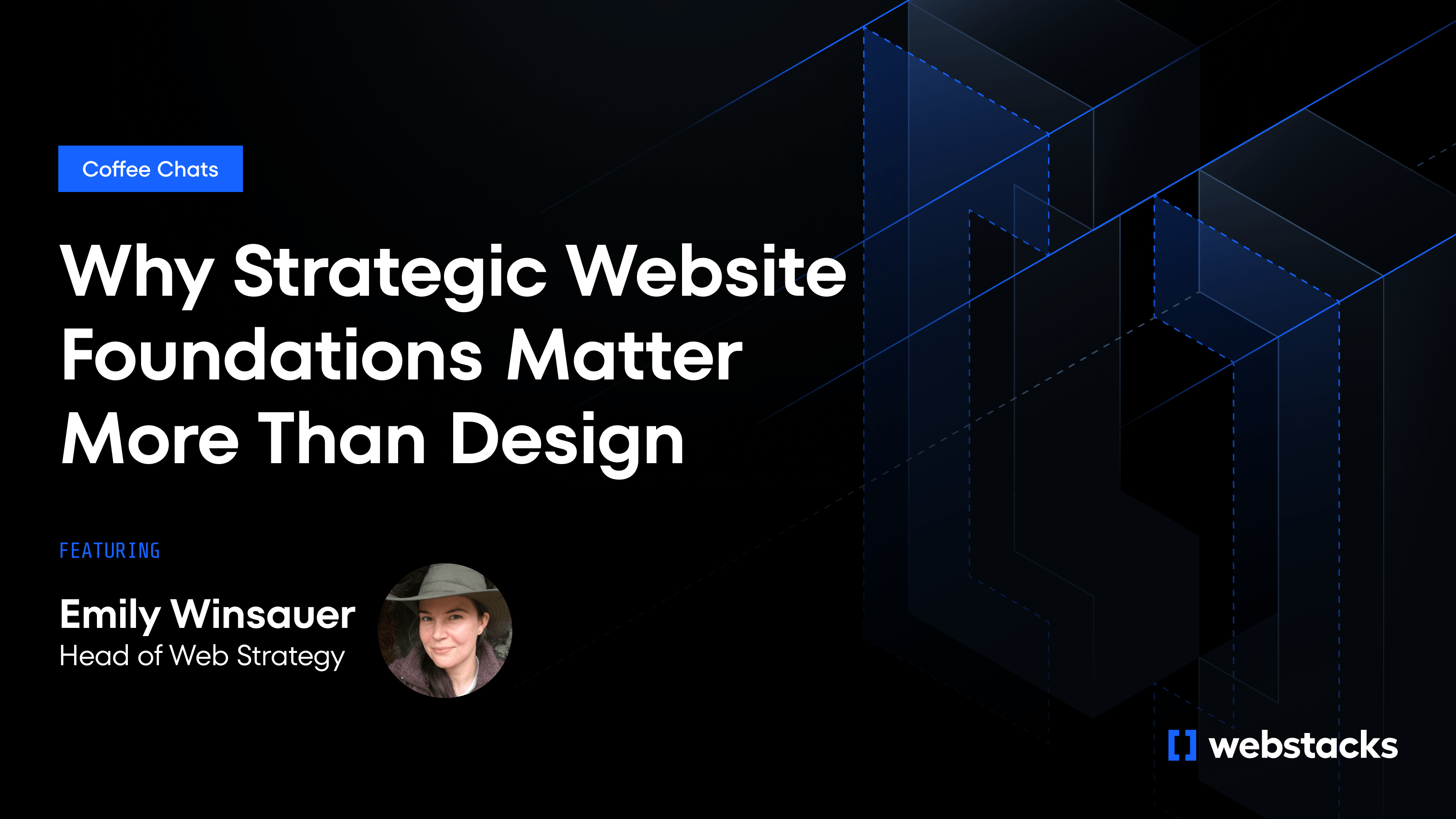What’s happening right now with AI transparency feels strikingly familiar to what we’ve seen recently with compliance, data security, and trust and safety. All of a sudden, these weren’t just buzzwords in tech —they became pillars of your marketing for highly regulated industries and enterprise-facing businesses. Without clear callouts addressing these concerns, sales discussions dragged on, deals stalled, and trust became the biggest barrier to doing business.
Now, AI is having a similar impact on SaaS marketing and sales. The same elevated standards of ethics, accountability, and transparency that we’ve all become accustomed to are expected with AI. And just like before, businesses that can’t substantiate their claims – or worse, fail to address them at all – risk being left behind in a market that demands trust signals above all else.
If AI is at the core of your product offerings, be prepared to provide clear, comprehensive explanations about how your technology works. From data usage and privacy practices to model capabilities and limitations, customers will expect explanations at every turn.
For marketers, this invites a whole new challenge: How do marketing teams help the business communicate their product’s AI in a way that’s clear, accessible, and trustworthy?
In this article, we delve into the rise of AI and the profound impact we believe it will have on the marketing site. Keep reading to understand how we got here and who is already ahead of the cure when it comes to responsibility and openness with AI.
AI Shakes Up Procurement
In 2025, AI will have a significant impact on the structure of organizations. With a growing demand for transparency, we’re seeing a striking evolution in the stakeholders and the processes involved in procurement. Recently, an influx of enterprises started rolling out AI councils and filling new positions like chief information officers (CIOs) and chief security officers (CSOs) to review every detail of how AI is integrated into a product.
Before their CFO signs on the dotted line, they need to see exactly how the models are designed, what data they rely on, and whether the company has proper AI safety measures in place.
If you are deploying AI across your products, you are now being berated with mounting questions:
- How does the AI work?
- How does it interact with my data?
- Who is interacting with my data?
- What safeguards are in place to prevent harm or bias?
In the last few months, we’ve had multiple clients inform us about deals that were significantly delayed due to the lack of trust and safety materials related to their AI. This also left us wondering about the number of missed opportunities that didn’t even make it to the doorstep because this information wasn’t on the website.
How we’ve seen marketing sites adapt to user needs
As the business landscape evolves and customer priorities shift, so must the marketing website.
Take resource hubs, for example. These were born out of a demand for varied content types that could better serve the distinct needs of customers. A blog alone couldn’t house everything from case studies and whitepapers to interactive tools and templates. As a result, resource hubs became their own dedicated sections, designed to guide users toward the content most relevant to them.
The same evolution can be seen in integration marketplaces. Customers began to prioritize versatility and the ability to seamlessly connect their favorite tools and systems. In response, integrations were elevated from being buried within developer documentation to becoming fully-fledged directories.
We predict that AI transparency will emerge as the next key pillar of B2B marketing in 2025.
For early-stage websites, this may be an addition to a Trust and Safety page or a dedicated section outlining the company’s AI policies, practices, and commitments.
For more mature companies or those whose offerings are deeply rooted in AI, this transparency could evolve into a standalone web experience. Such a platform might include interactive elements like detailed AI explainer tools, real-time audits, or case studies showcasing responsible AI in action.
Regardless of format, this shift reflects growing customer expectations for openness and accountability in AI, which will soon become a baseline requirement for trust in B2B tech.
So, where are we at today?
The Reality: Modern organizations are getting more strict with the technologies they utilize, employing dedicated stakeholders to diligently research, vet, and approve AI.
The Problem: Locating, organizing, and sharing this information with clients has proven to be difficult - slowing procurement or preventing adoption.
The Compounding Challenge: This information is presented through a disjointed experience, which damages the very trust that companies so deeply wish to build.
The Opportunity: By optimizing marketing websites to meet the needs of a modern AI customer, companies can streamline the sales process, establish credibility, and gain a competitive edge.
Companies at the Forefront of AI Transparency
Let’s walk through a few examples of websites that are already incorporating AI into their trust and safety messaging.
HeyGen
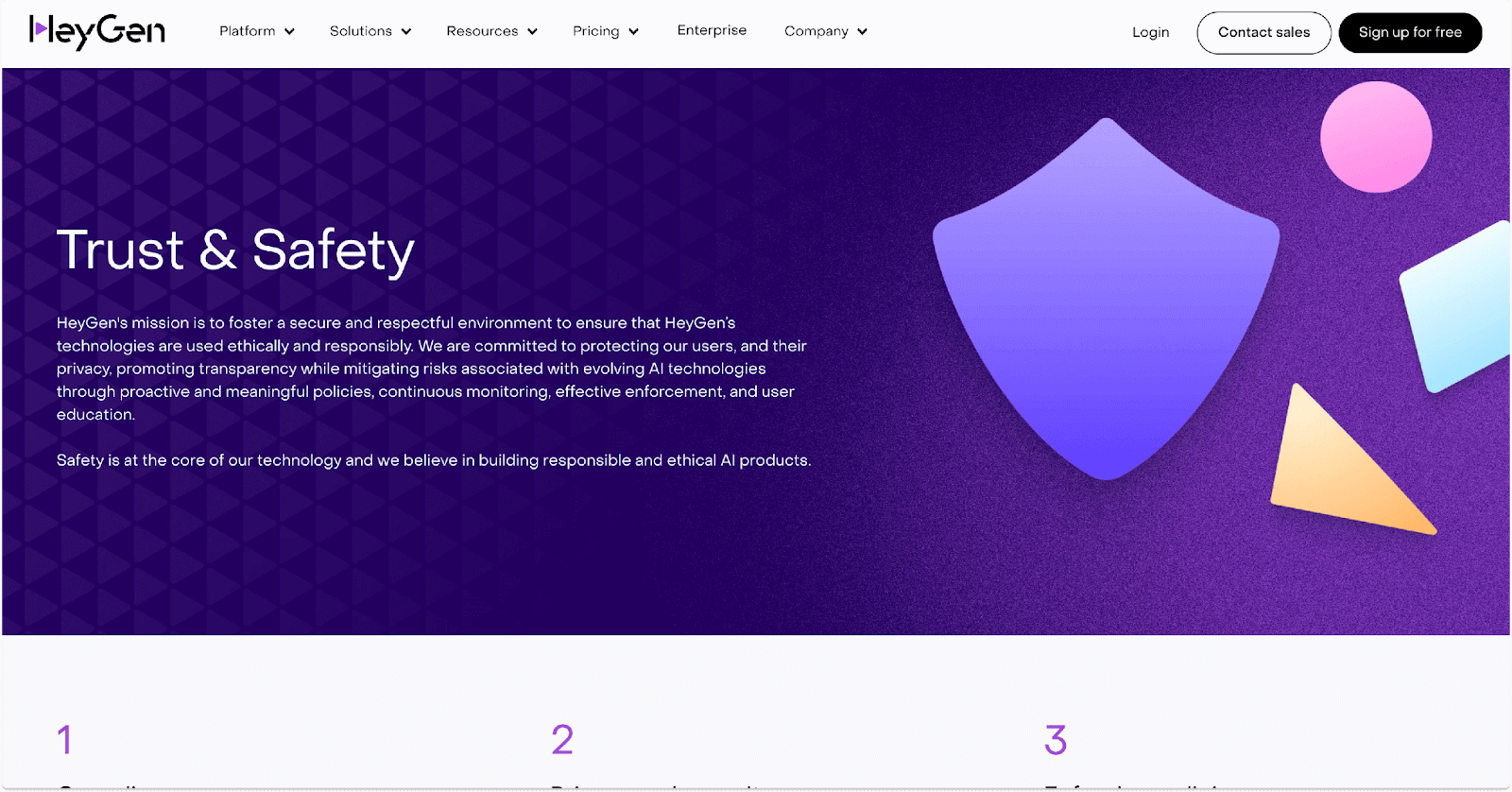
If you’re not familiar with HeyGen, they are a fast-growing startup that is bringing high-quality, life-like AI video content to the masses (they are also a client of ours here at Webstacks).
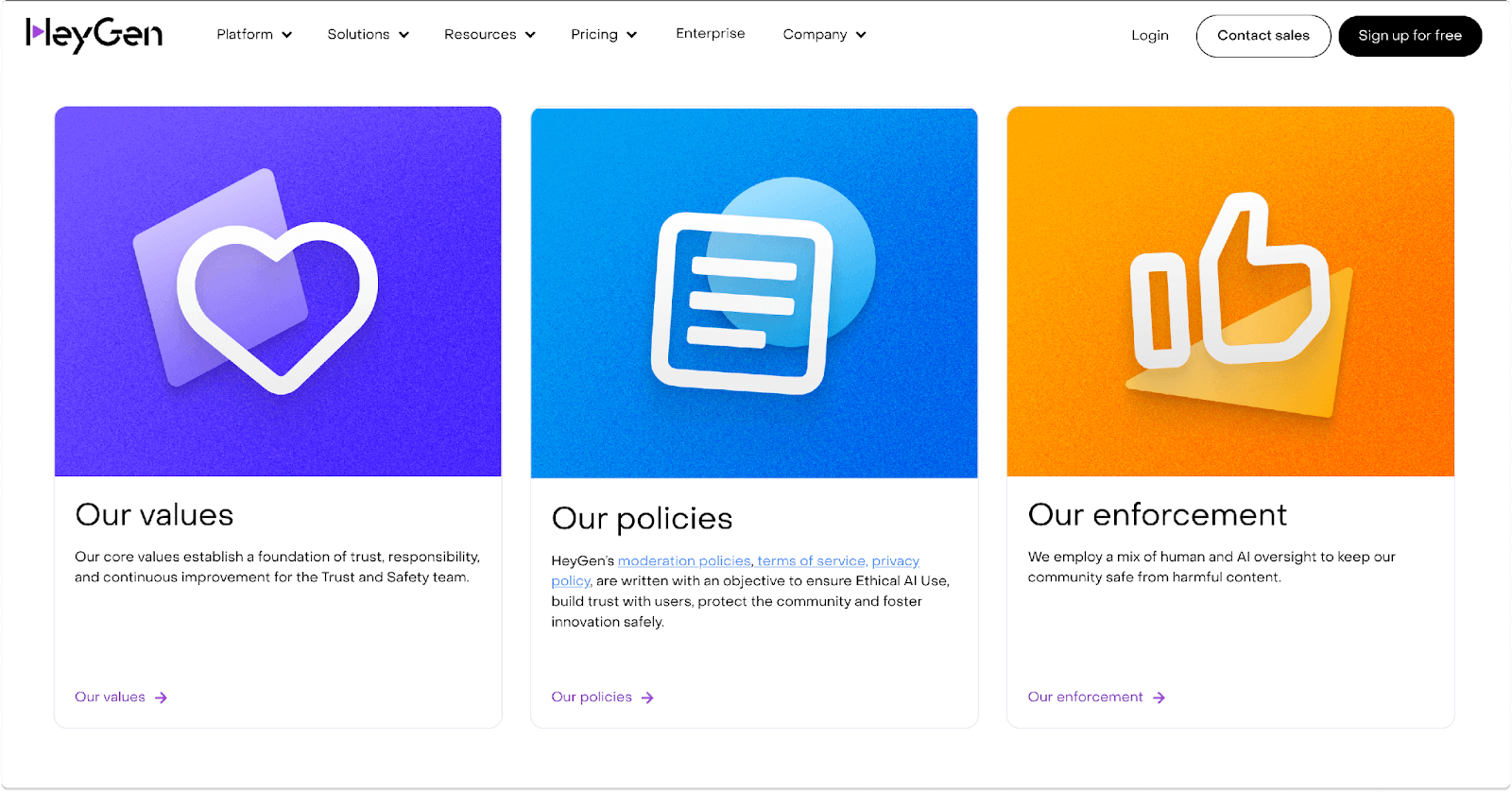
Generative AI lies at the heart of their business, and a commitment to transparency around trust and safety with their technologies is ingrained in the company’s core values.
ZenDesk

Transparency is central to Zendesk’s approach, and its Trust Center is a prime example of its commitment to openness. The Trust Center likely started as a hub for security, privacy, and legal content and evolved to showcase Zendesk’s AI capabilities.
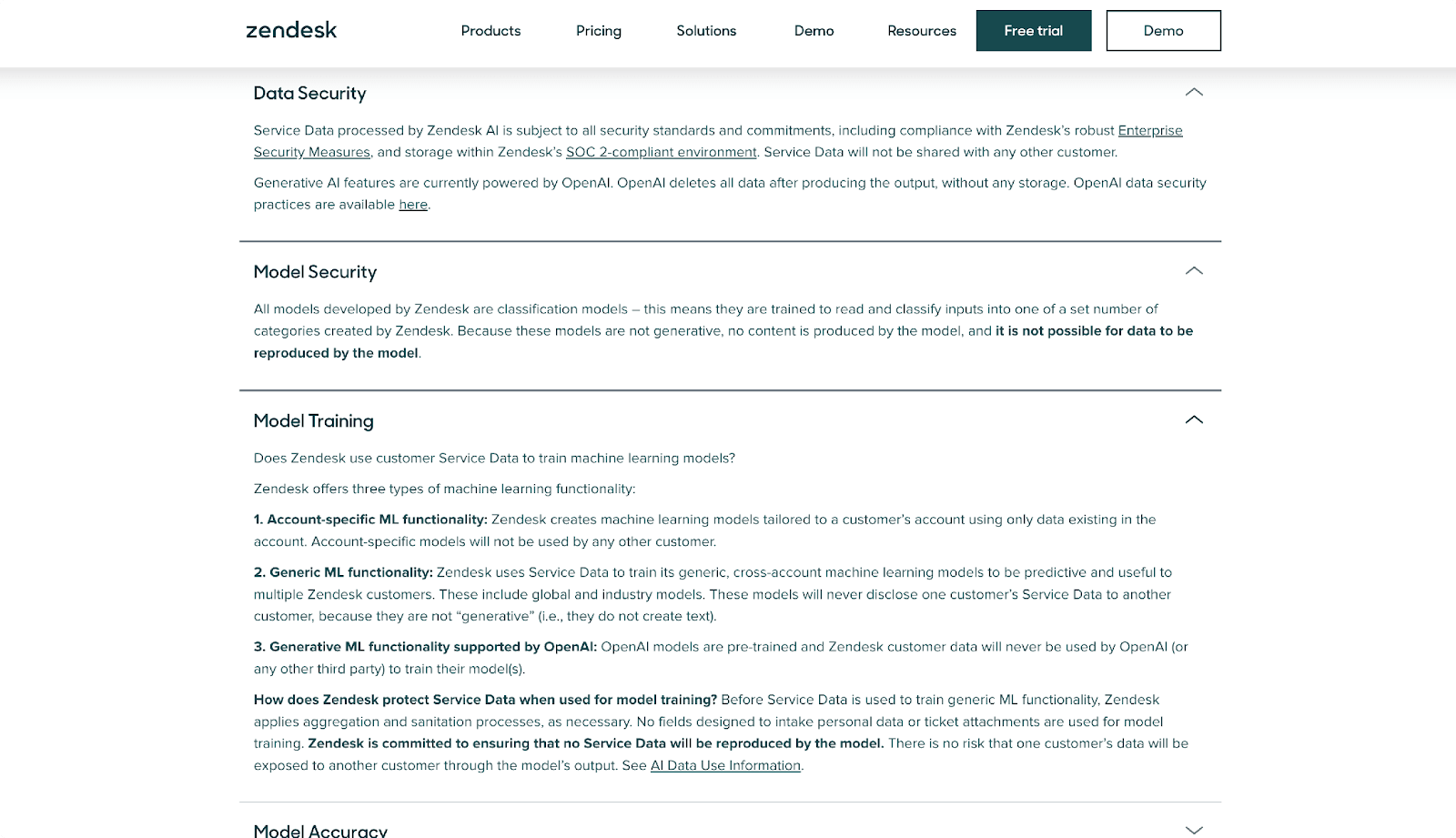
Its accordion-style design is fairly simple and it is buried a bit down the page, but still accessible and includes all the relevant details and links a potential buyer might need to reference.
HubSpot
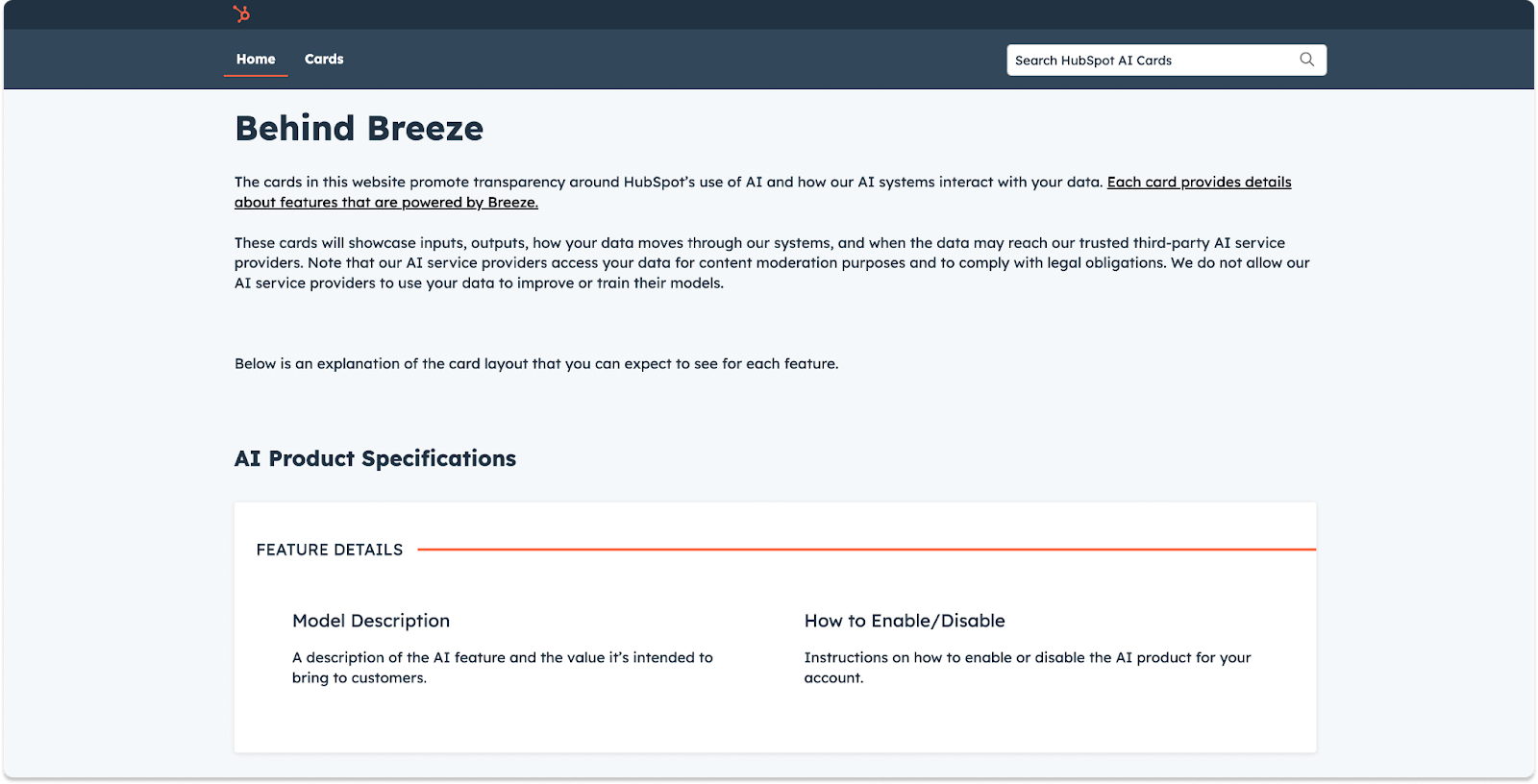
In April of 2024, HubSpot launched its new microsite, behindhubspotai.com. HubSpot's transparency hub breaks down exactly how their AI-powered tools work, with a user-friendly interface that feels approachable and easy to navigate.
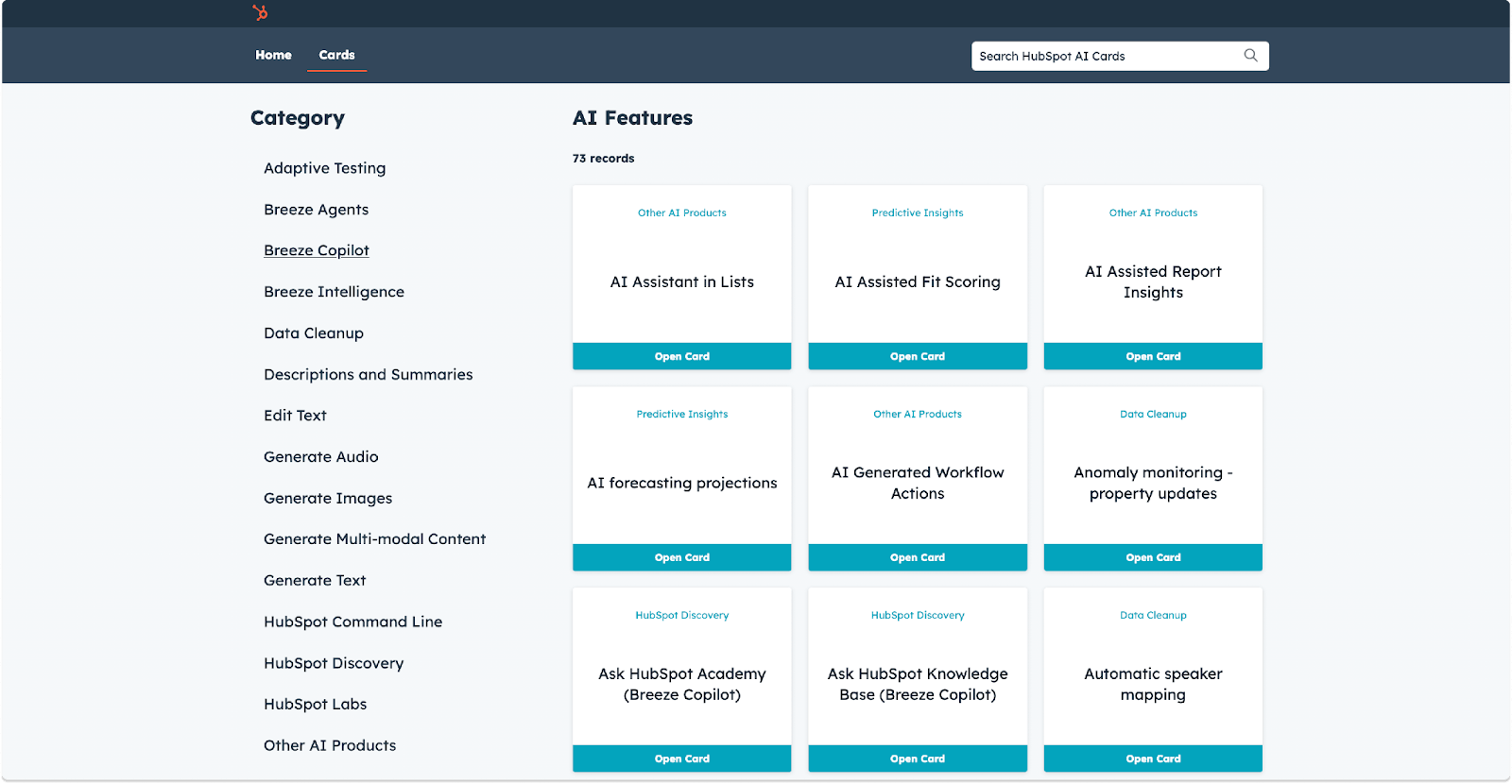
Right when you land on the page, everything is broken into neat categories. Each AI feature has its own dedicated card or section, so you’re not digging through paragraphs of text. It’s almost like scrolling through a modern FAQ page but focused on AI.
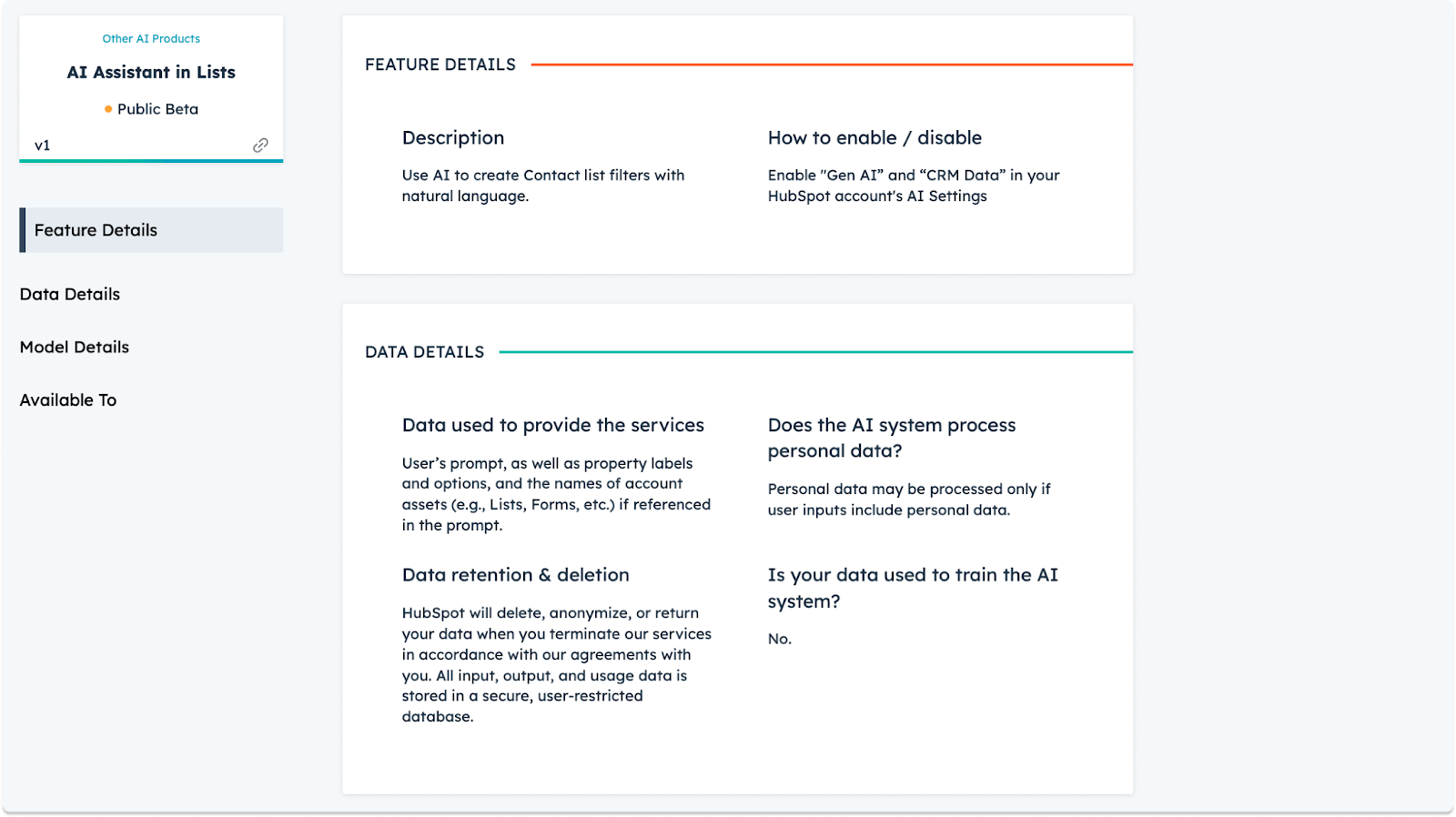
Whether you’re curious about how AI suggests better marketing emails or wondering if your CRM data is part of training a large model, it’s all laid out clearly, visually, and interactively.
Cranium
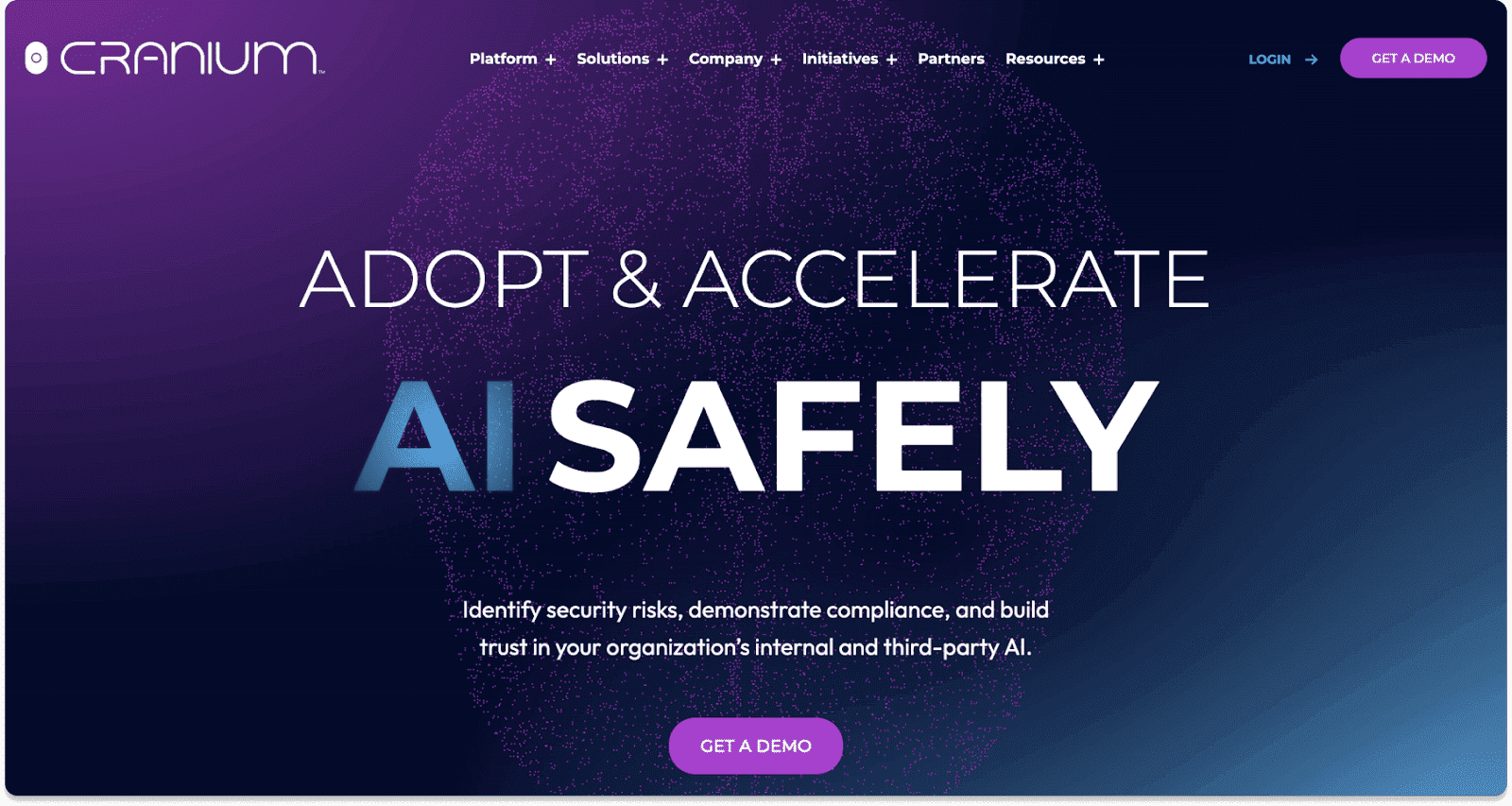
Cranium is a leading security firm that provides organizations with comprehensive tools to ensure the security and compliance of their AI systems. Its platform offers features such as the AI Card, which delivers detailed insights into the development, deployment, and compliance status of AI, which enhances transparency and builds trust with stakeholders.
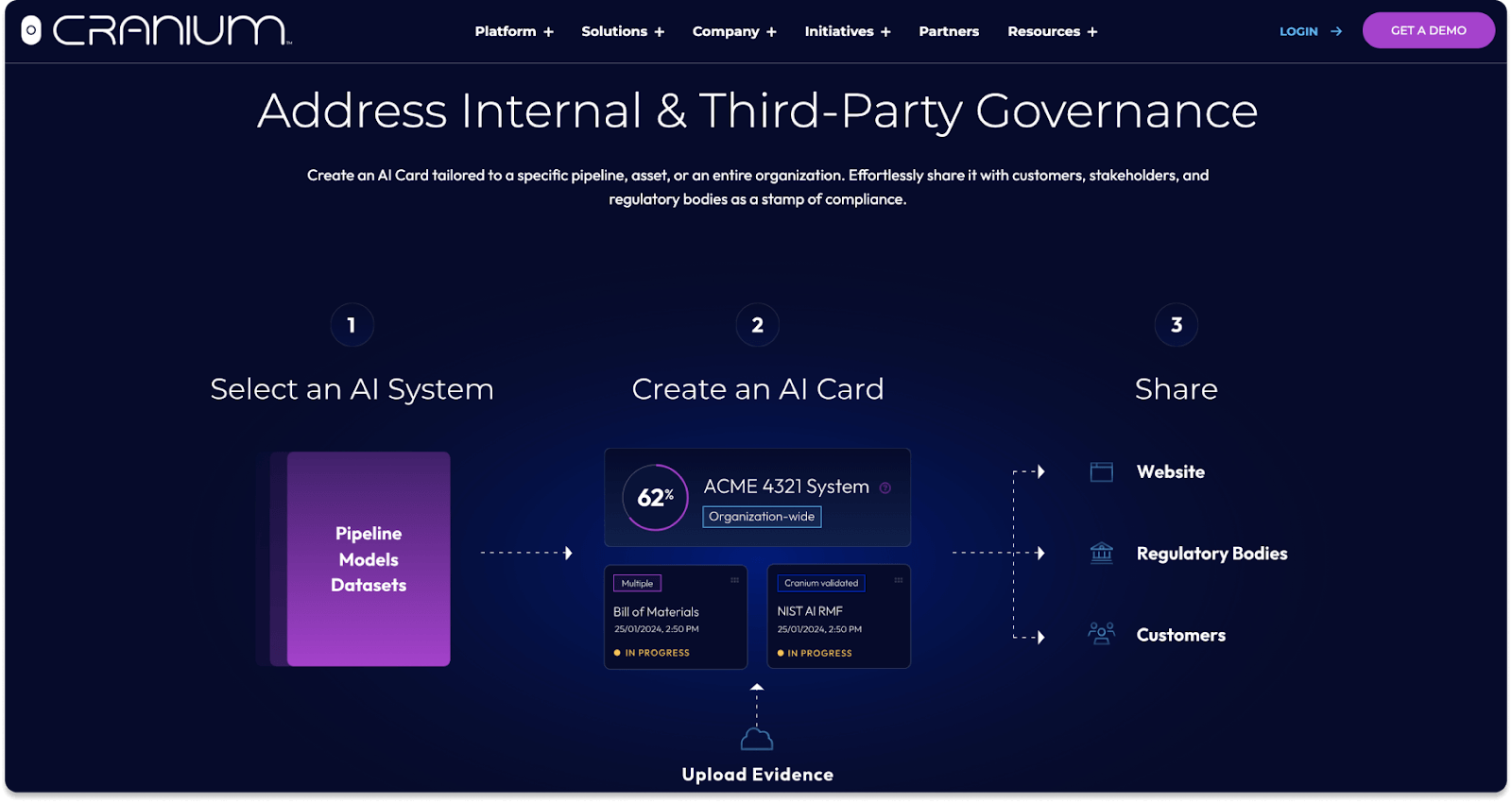
It offers multiple sharing options, such as embedding via an HTML snippet, exporting to PDF, and more, allowing companies to showcase their AI systems' compliance and security posture directly on their websites. This kind of tool goes far beyond conventional documentation. Rather, it provides users with an interactive experience that showcases real-time insights into your AI. If you want to stand out from the crowd and give prospects and customers the ultimate transparency, Cranium is a powerful tool to add to your AI tech stack.
Conclusion
The best SaaS websites are oftentimes where to look for indicators of what’s to come for the rest. While still early, there is certainly a rise in AI transparency.
Trust and safety content used to be tucked away in the footer, unindexed, and only surfaced when sales and customer success teams were occasionally asked for it. Now you could argue that bragging about being secure and compliant is cool.
This accountability was given in sectors like finance, data processing, medtech, and cybersecurity. But today, it’s rapidly becoming a fundamental selling point with the growth of AI. This leaves marketers with a huge responsibility – figuring out how to position their brand as the definitive leader in AI capability and credibility.
Our bold take is that 2025 will be the year of AI transparency. It will certainly make or break deals. It will likely decide industry winners and losers. Lastly, it will challenge marketing teams to deliver, intuitive, engaging, and informative content that will directly impact the bottom line.
If this article sparked your interest and you want to take your website’s AI transparency to the next level, we’d love to hear from you! At Webstacks, we specialize in building cutting-edge, composable websites for B2B brands that thrive in today’s fast-evolving digital landscape. Let’s connect and explore how we can position your business as the first mover in AI trust and safety.
Schedule a discovery call with us today – your journey to a smarter, more transparent web presence starts here!

